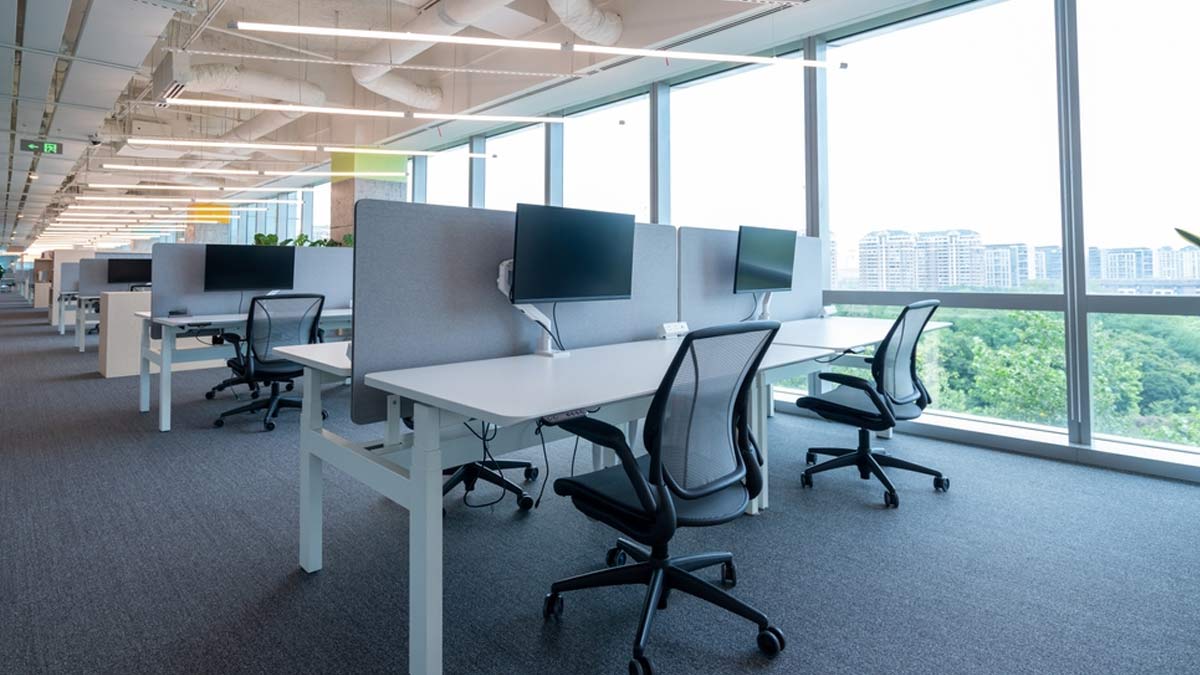
In today’s fast-paced work environment, where many of us spend long hours sitting at desks, a silent health crisis is brewing. Work-Related Musculoskeletal Disorders (WMSDs) and physical discomfort are on the rise, affecting a significant portion of the Indian workforce. According to recent reports, 46% of workers experience pain in one focused area, while over half suffer discomfort in multiple areas. Additionally, a McKinsey Health Institute survey in 2023 found that 59% of Indian employees reported burnout—one of the highest rates globally.
Table of Content:-
These staggering statistics emphasise the need for more than just traditional wellness programs. As organisations confront this growing crisis, the concept of workplace wellness is expanding to address holistic employee well-being, including the physical environment. One key element in this transformation is ergonomic furniture, which has proven benefits for both health and productivity.
Ergonomic Furniture: The Backbone of Workplace Wellness
Ergonomic furniture plays a crucial role in reducing common issues like back pain, neck strain, and repetitive stress injuries. To understand the role of ergonomic furniture, OnlyMyHealth interacted with Dr Shubhada K, Chief Ergonomist at Godrej Interio. Dr Shubhada explains, "The modern workplace is evolving, and with that, the need to prioritise employee health is more important than ever. Ergonomic furniture is no longer a luxury—it’s a necessity."
Adjustable chairs, sit-stand desks, and supportive keyboards are just a few examples of ergonomic solutions that can help prevent the physical toll associated with sedentary work. In India’s dynamic corporate landscape, where long hours and high productivity demands are the norm, these solutions are becoming increasingly important.

Productivity Gains Through Ergonomic Design
The link between ergonomic furniture and productivity is well-documented. By reducing physical discomfort, employees can maintain focus and work efficiently without frequent breaks due to fatigue or pain. Research shows that employees using ergonomic chairs with lumbar support report fewer distractions and better concentration.
Dr Shubhada highlights this: "A well-designed workspace, equipped with ergonomic furniture, allows employees to focus on their tasks rather than their discomfort. This directly translates to improved performance and productivity."
In India's corporate culture, where competition and performance are high priorities, ergonomic adjustments can significantly impact overall output. Companies that invest in ergonomic furniture are not only promoting employee well-being but also enhancing productivity—a win-win for both employees and businesses.
Employee Well-being and Retention
"Ergonomic furniture not only improves physical health but also contributes to a positive workplace culture. Employees who feel cared for are more engaged, less likely to experience burnout, and are more inclined to stay with their company," says Dr Shubhada.
Moreover, ergonomic solutions help reduce absenteeism. By minimising the risk of musculoskeletal issues and other injuries, employees are less likely to need time off due to physical discomfort, which, in turn, reduces the strain on healthcare costs and productivity losses.
Also read: Having Intense Back Pain? 7 Quick Fixes For Back Pain Relief
Key Features of Ergonomic Furniture

Ergonomic furniture offers several advantages, including:
Reduced Physical Discomfort: Adjustable lumbar support in chairs ensures proper spinal alignment, helping employees avoid slouching and the associated discomfort.
Enhanced Focus: A comfortable seating position reduces distractions from pain or fatigue, enabling employees to concentrate better.
Promoted Movement: Sit-stand desks encourage movement, improving circulation and reducing the negative effects of prolonged sitting.
Meeting the Needs of Gen Z
Gen Z, a tech-savvy generation that spends a significant amount of time at desks, is particularly susceptible to workplace strain. Ergonomic solutions tailored to their needs, such as height-adjustable workstations and chairs with proper lumbar support, are essential for ensuring their health and productivity.
"Gen Z employees are looking for workplaces that prioritise both comfort and style. Companies that invest in ergonomic furniture are more likely to attract and retain this younger workforce," Dr Shubhada observes.
Also read: Types Of Exercises To Do And Avoid With A Lower Back Pain
Personalising the Workspace

In addition to comfort, Gen Z values individuality and self-expression. Ergonomic workspaces that allow for personalization—whether through flexible layouts or the ability to bring personal items—can boost engagement and job satisfaction.
"Ergonomics isn’t just about health; it’s about creating spaces where people feel comfortable and empowered to do their best work," says Dr Shubhada.
Conclusion
As India’s workforce becomes more conscious of the importance of health and well-being, ergonomic office environments are no longer optional—they are essential. To keep up with this growing demand, companies must regularly assess their office spaces for ergonomic compliance and provide training to ensure employees are using their furniture correctly.
"Ergonomic design is the future of workplace wellness. As businesses evolve, those that prioritize employee well-being will lead the way in creating healthier, more productive work environments," concludes Dr Shubhada.
Also watch this video
How we keep this article up to date:
We work with experts and keep a close eye on the latest in health and wellness. Whenever there is a new research or helpful information, we update our articles with accurate and useful advice.
Current Version